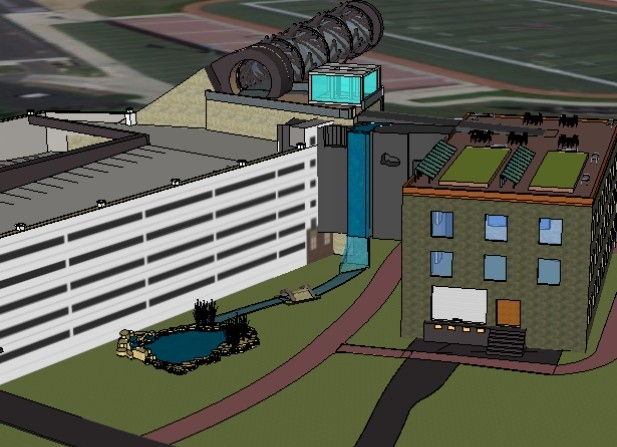 During the fall semester, the environmental group conducted an environmental analysis of the former Hummel Lumber property and the former Rough-Dry Laundry property with the goal of determining which of these properties would be most suitable for the development of a Civil and Environmental Research Center from an environmental standpoint. While not a full-fledged environmental site assessment, the analysis included a visit to each site, historical research, a records search, and the creation of mock interview questions along with a list of relevant persons who could be interviewed. However, actual interviews were not conducted due to a Lafayette College policy that requires students to gain official approval in order to conduct interviews of persons not connected with the College. Although the environmental team concluded that both sites would be suitable for development, it recommended the Hummel Lumber site be used because of that site’s reduced risk of flooding.
During the fall semester, the environmental group conducted an environmental analysis of the former Hummel Lumber property and the former Rough-Dry Laundry property with the goal of determining which of these properties would be most suitable for the development of a Civil and Environmental Research Center from an environmental standpoint. While not a full-fledged environmental site assessment, the analysis included a visit to each site, historical research, a records search, and the creation of mock interview questions along with a list of relevant persons who could be interviewed. However, actual interviews were not conducted due to a Lafayette College policy that requires students to gain official approval in order to conduct interviews of persons not connected with the College. Although the environmental team concluded that both sites would be suitable for development, it recommended the Hummel Lumber site be used because of that site’s reduced risk of flooding.
During the spring semester, the Lafayette Engineering Company focused on developing plans for the construction of a Civil and Environmental Engineering Research Center at the former Hummel Lumber site. The environmental team played an integral role in this process by tying together many of the site’s design features. The team conducted an analysis of sustainability features that could be included at the site and concluded that a green roof, a rain-garden, solar panels, and a water collection and reuse system would all fit within the goals for the project. After extensive design work, these features were included in the final site design. The environmental team also designed the stormwater management system for the proposed site development. This included analyzing the current and proposed site conditions, performing design calculations, and developing a set of drawings detailing a proposed post-construction stormwater management plan. The team also prepared erosion and sediment control plans detailing measures to control the conveyance of topsoil off the site during and after construction.
One of the goals outlined in Lafayette College’s master plan “is to encourage sustainability at the ‘Campus Scale’ by addressing four broad categories: ecology and hydrology, energy, built environments, and human capital.” The design for the new Civil and Environmental Engineering Research Center incorporates these categories. The plan addresses energy by providing an alternative source and implementing photovoltaic panels on the existing structure. The design also includes local materials in order to incorporate a sustainable built environment. Various stormwater strategies were configured in order to maintain the site’s hydrology and ecology. The plan aims to design a site that will set a standard for future buildings constructed on Lafayette’s campus.
Work Product
- Erosion and Sedimentation Control Plan
- Erosion and Sedimentation Control Report
- Post Construction Stormwater Management Plans
- Post Construction Stormwater Management Report
- Sustainable Design Elements Report
